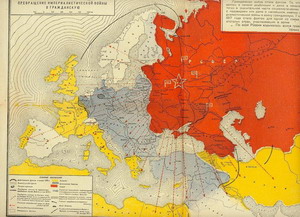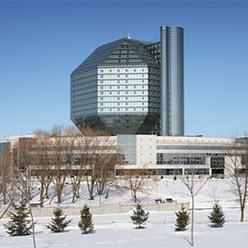
The End of the First World War on the territory of Belarus
 In the autumn of 1917, the number of combat operations at the front was declining (the last major battles occurred on 26 October and 31 October) and after the Bolshevik revolution they came finally to the end. In mid-November, the troops started to conclude armistice with the enemy at the local level.
In the autumn of 1917, the number of combat operations at the front was declining (the last major battles occurred on 26 October and 31 October) and after the Bolshevik revolution they came finally to the end. In mid-November, the troops started to conclude armistice with the enemy at the local level.
In the evening of 17 November, 1917 committees of the 2nd and 10th armies ceased military operations in their areas and appealed to the German command with an official proposal to start peace talks.
The "total" front-line armistice took place on 23 November. The pact about the armistice was concluded by the Military Revolutionary Committee in the borough of Soly. It came into force on 23 November, 1917 and remained valid until 24 January, 1918 or "until the conclusion of a total armistice on all Russian-German front, if it occurred before the aforesaid period" (this is what happened). All military operations with the use of all the kinds of weapons of mass destruction, underground mining and field engineering, flights over the enemy’s location and about 11 km from the front line of their trenches, activities of scouts were immediately stopped on the Western Front from Vidzy to Pripyat. The parties undertook not to prepare for the attack and not to redeploy large forces from one front to another. It was prohibited for soldiers to go beyond the barbed wire entanglement, but those who did it were not punished.
The armistice signed in Soly acted technically not long – about two weeks, from 23 November till 2 p.m. of 4 December, 1917. It stopped to be in force after the signing of the 28-day truce on 2 December. It meant stopping of combat operations at Brest-Litovsk on the Russian-German front from the Baltic Sea to the Danube.
The last military clashes with the enemy on the territory of Belarus took place in February–March 1918. Then the German army broke the armistice by going on the offensive on all the fronts. On 20 February, the Germans marched into Polotsk, on 21 February – into Minsk, Rezhitsa and Dvinsk, on 24 February – into Kalinkovichy, on 25 February – Borisov, on 27 February – Zhlobin, on 28 February – into Rogachev and Rechytsa, and on 1 March – Gomel, on 3 March – into Orsha, on 5 March – into Mogilev. Among the large Belarusian centers only Vitebsk remained unoccupied. During February–March of 1918, by small forces the German army almost without loss captured 23 of 35 Belarusian districts, thereby for two weeks they achieved to what Russia’s enemy had been aspiring unsuccessfully for more than two years...
The rest part of an old Russian army which was uncoordinated and unable to fight together with small units of new Red Army could maintain only insignificant resistance to the invaders. However, fighting with the Germans occurred on the outskirts of Minsk, Talachyn, Kalinkovichy, Zhlobin, Retchitsa, Vitebsk, Gomel, Vetka. After the German troops hadn’t recieved resistance from the demoralized army, they reached Orsha for a few days.
Formally, the war for the Bolsheviks’ Russia ended on 3 March, 1918 with the conclusion of the infamous Treaty of Brest-Litovsk which stated that almost the entire territory of the modern Belarus came in the German occupation zone.
The elimination of the post of the Supreme Commander occurred on 5 March, 1918, and the same happened with the Stavka on 16 March. The headquarters of the Western Front was captured by the German army in Minsk on 21 February, apart from a small part of them, headed by Commander of the Western Front A. Myasnikov, who had evacuated in Smolensk for two days before. On 24 March, the headquarters moved from Smolensk into Tambov, where on 12 April the Stavka was closed down.


